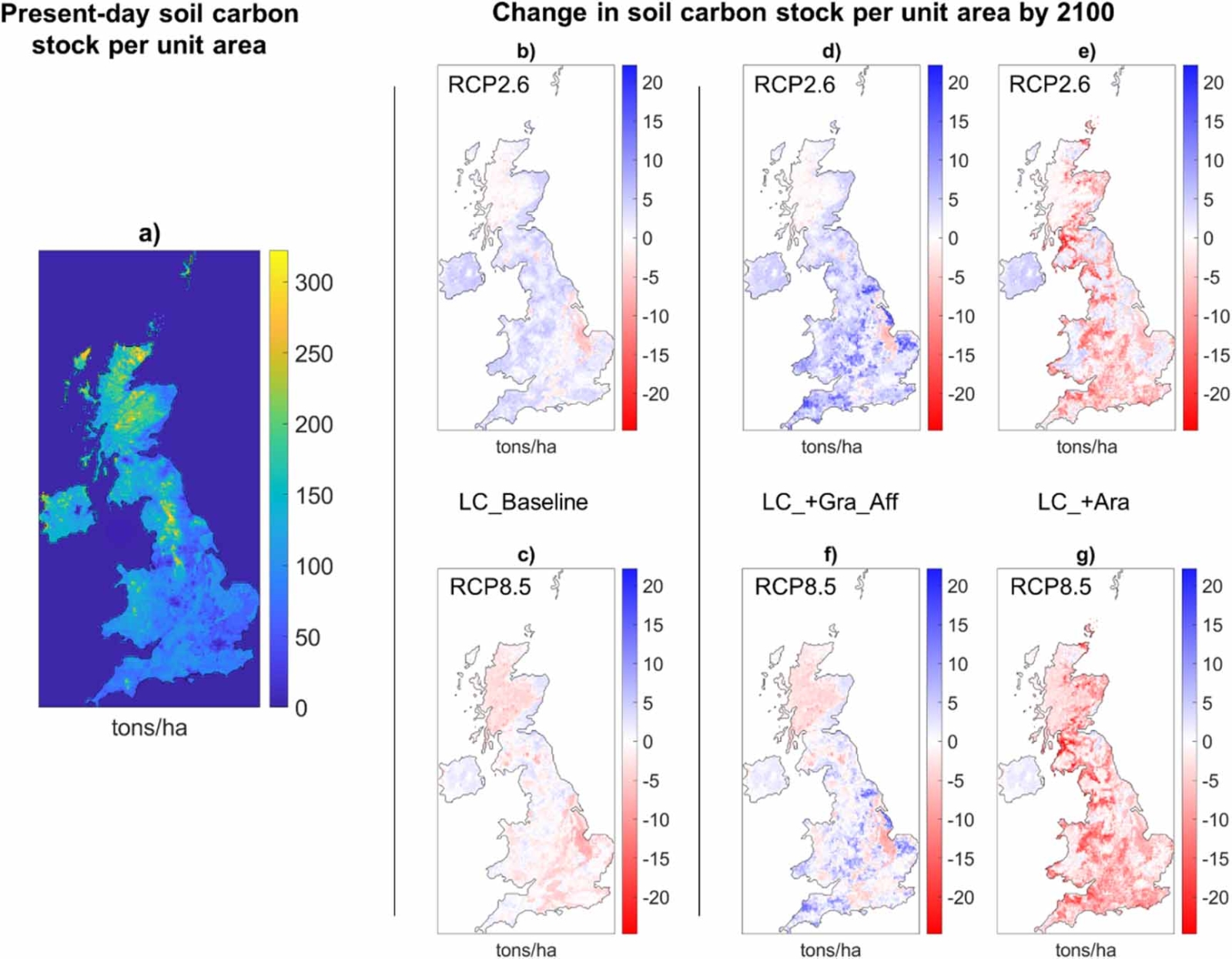November 15, 2022 | Environmental Research Letters |
Introduction: Carbon sequestration in soil and plant biomass plays a crucial role in mitigating climate change. However, global assessments often overlook factors like climate warming, nutrient availability, and local land use, which significantly impact carbon storage potential. In this UK-based study, the research team formed by Lancaster University, University of Liverpool, and UK Centre of Ecology and Hydrology explore carbon sequestration potential under varying land use, climate, and nutrient conditions.
Key findings: The research team finds that meeting UK targets for grassland restoration and afforestation could sequester a substantial amount of carbon by 2100, equivalent to a significant portion of annual greenhouse gas emissions. Conversely, expanding arable land could reduce carbon storage. Warmer climates diminish the potential gains from afforestation and grassland restoration. Overall, while land use changes could contribute to carbon sequestration, success depends on global emission reductions, emphasizing the need for concerted efforts to combat climate change.
Fig. | Simulated changes in spatial distribution of UK soil organic carbon stocks per unit area (topsoil + subsoil) under contrasting climate and LC change scenarios between now and 2100, assuming medium N deposition. Modelled present-day stocks are shown in panel (a) for reference. Top row of maps: soil carbon changes by 2100 in a +2°C world (RCP2.6). Bottom row of maps: soil carbon changes by 2100 in a +4°C world (RCP8.5) (different land uses). Middle column: soil carbon changes under (b) RCP2.6 and (c) RCP8.5 assuming present-day land use patterns do not change. Right column, top section: soil carbon changes under RCP2.6 and either (d) grassland restoration with afforestation or (e) arable expansion. Right column, bottom section: soil carbon changes under RCP8.5 and either (f) grassland restoration with afforestation or (g) arable expansion. Units: ton C per ha. Note: LC scenarios are not extended to Northern Ireland.






